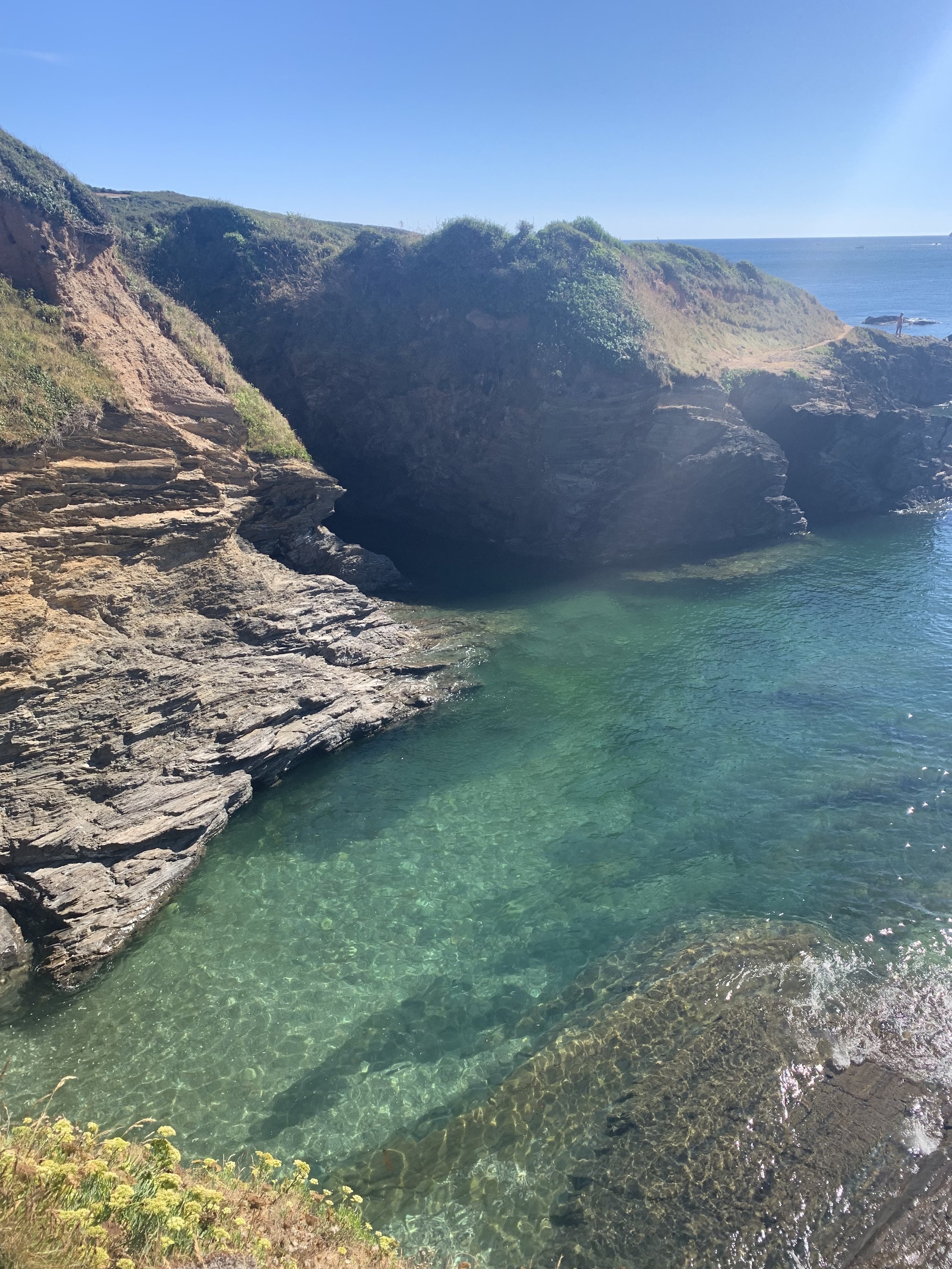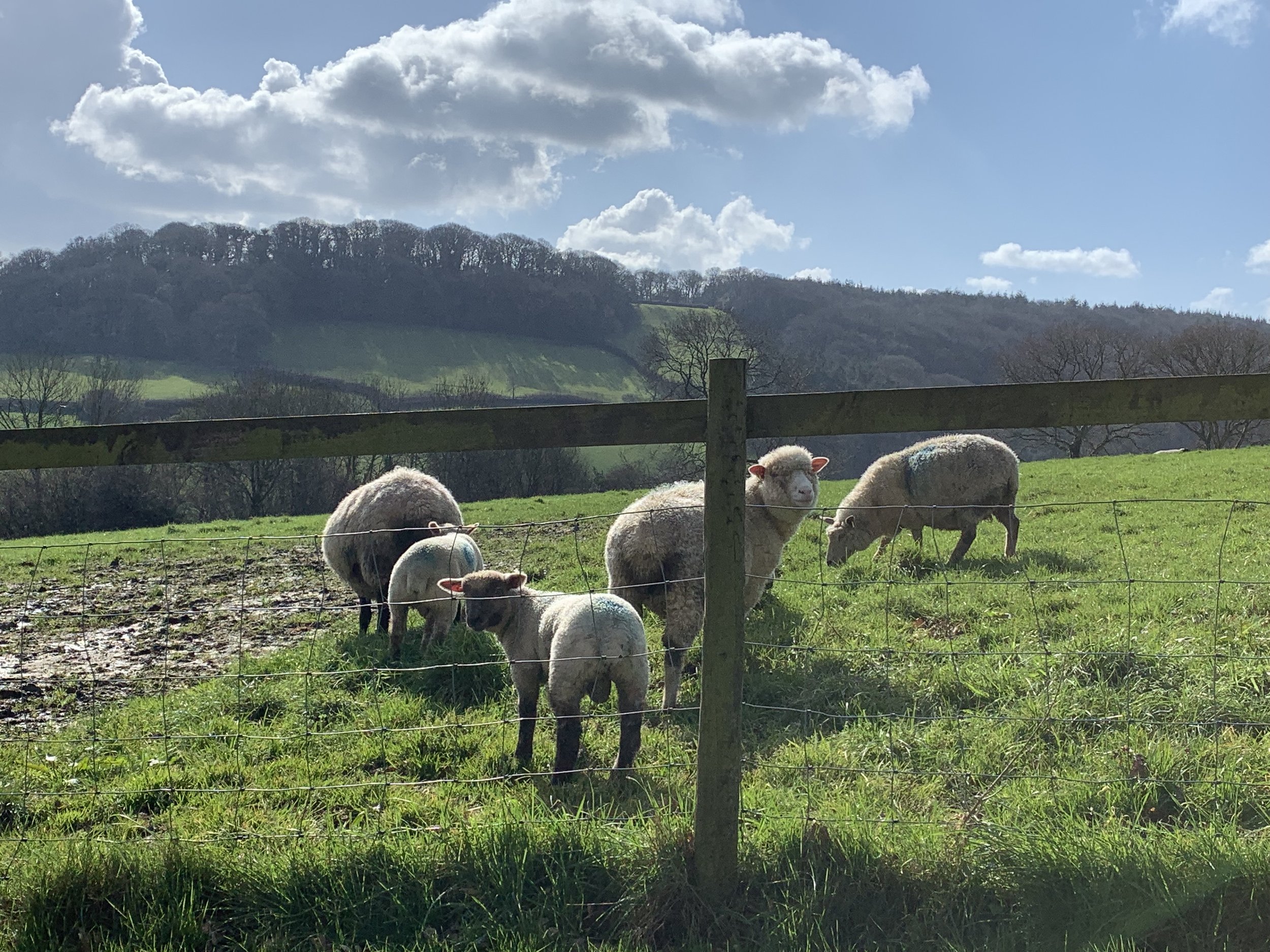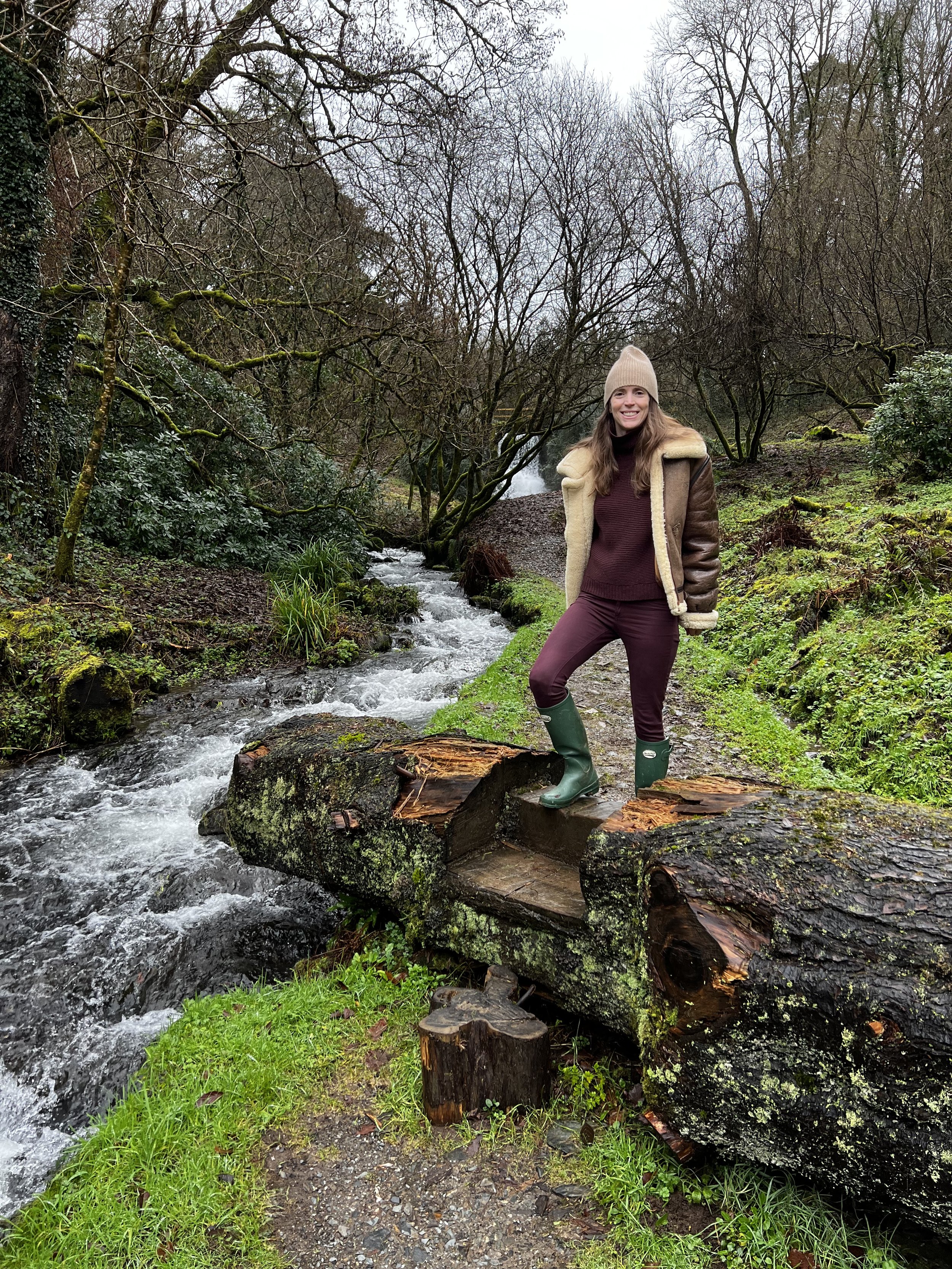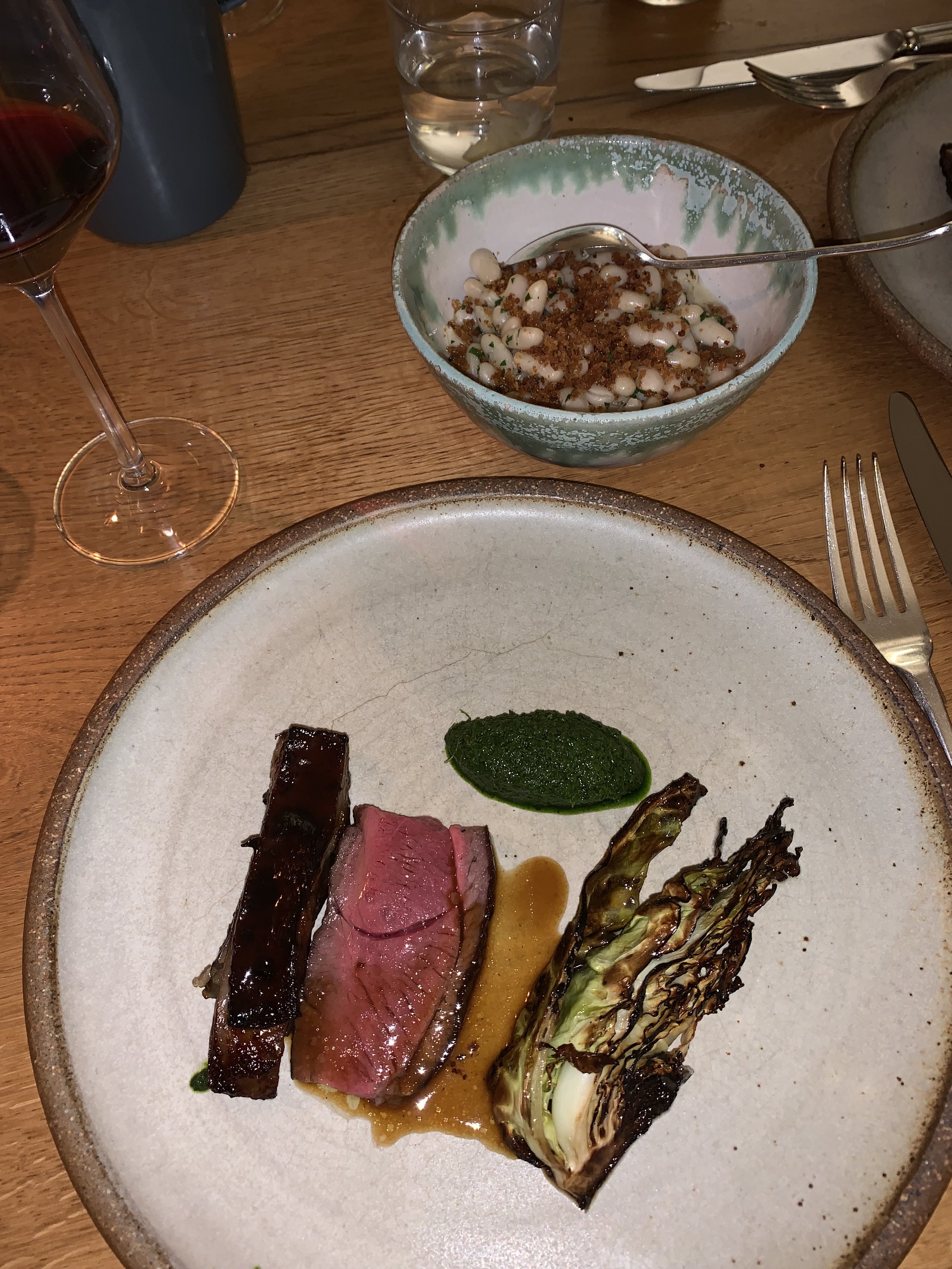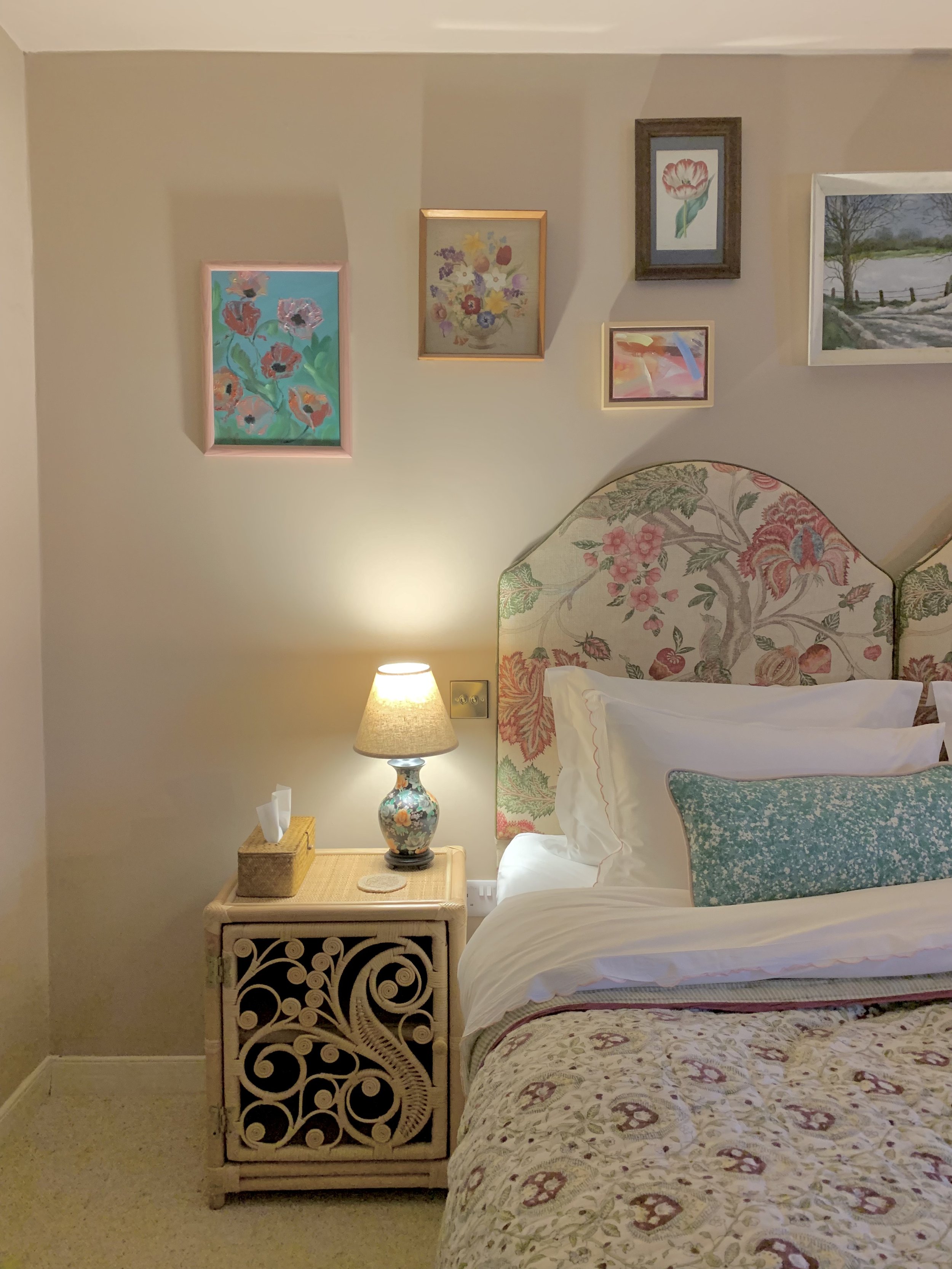Travel Guide: Devon, England
My discoveries from many visits to this magical part of England where farmland meets the sea
Endless fields of heather in Dartmoor in summertime
I may be biased, but I think Devon in Southwest England is one of the most beautiful places in the world. I have come to experience this magical place through my husband who’s from Devon and whose family still lives there. We have visited during pretty much every season, and no matter the weather, I am blown away every time. I might not have ever come here on my own, and that’s why I am always so excited to recommend it to people — in or outside of England. It’s an area not to be missed, well worth putting on your travel bucket list.
Every time I visit I try to make new discoveries so while this guide isn’t comprehensive, it covers a pretty wide area. But most importantly, I’m only including recommendations for places that I’ve truly enjoyed and think are worth your time, energy and pocket book.
A curated guide to creating a one-of-a-kind home: interior inspiration, styling tips, & unique objects
FOLLOW ALONGRELATED ARTICLESTravel Guide: Cornwall, England
Where to Stay in England: Best Design Hotels
sense of spen• cer
noun [sɛns, əv, ˈspɛnsər]
Reflecting one’s identity through their interiors
A home with character and soul
When a house becomes a home
Cliffs overlooking crystal clear waters in Plymouth, Devon.
What Makes It So Special
Natural beauty. This is true English countryside, so much of it is still untouched or left as farmland (yes, there are lots of sheep). Imagine landscapes from a Jane Austin novel (and in fact some film adaptations have been filmed there). But what differentiates it from other popular country areas, like the Cotswolds, is that Devon and Plymouth both have the sea. Where the countryside and ocean collide makes for some of the most breathtaking views. Unlike so many seaside areas, the coastline is fairly unspoiled, largely a result of the remoteness and ruggedness.
Thriving food scene. Like many I had always dismissed British food from a culinary perspective. Luckily for me, I was very wrong. In fact, this part of England is turning into quite a culinary destination. Due to the location, it’s a seafood lovers paradise and farm to table is within a few miles. Many top chefs, from London and elsewhere, have relocated to the region for a better quality of life and for the fruits of the land and sea. Many agriturismos, which are essentially farms designed to receive guests for food and accommodation, have popped up along the countryside and are rivaling the long-established foodie regions of Basque region of Spain and Emilia-Romagna in Italy. These restaurants-with-rooms are making inventive food using the best local ingredients and welcoming guests with quintessential English style.
Authenticity. So much is said these days about authenticity, it starts to lose its meaning. So here’s what it means to me. When I travel to the country, I don’t want to feel like I’m in the city. We don’t need everything to be like what we are used to. It’s good to leave our creature comforts of the city, the gourmet shops and extreme convenience, and embrace the rhythms and customs of a different place altogether. And that’s what you get here. There’s a real soul to the Southwest. Maybe it’s because the people here are so accustomed to nature being at their backdoor – they take the time to enjoy it and live at a slower pace. And so you will too.
Random Facts
WWII History. When I first spent time in southwest England, I was surprised how prominent WWII landmarks are. Many of the seaside towns were used as staging grounds for sending troops to France for key battles. The central part of Plymouth (where my husband is from) was bombed out during the war and has subsequently been rebuilt at a loss of those historical buildings. Perhaps more so than in big cities, you can really pause and remember these important moments in history when you come across local memorials.
Duke of Cornwall. As an American, I was vaguely aware of the Prince of Wales inheriting the Duchy of Cornwall, but it never really dawned on me what that meant. I’ve since come to understand that the Duke of Cornwall / Prince of Wales owns vast amounts of land across Cornwall and parts of Devon, making him one of the biggest landowners in Britain, and he generates income by collecting residential and commercial rents.
Devonshire. You may come across ‘Devonshire’, as that’s what the area used to be called. In the 1970’s, the local government rebranded it to Devon for unknown reasons (that I’ve been able to find anyway).
Devon dairy. As a rural area, Devon has a rich history of dairy farming. Devon’s dairy production is 39% of England’s dairy output. Its most famous dairy export is classic Devonshire cream or clotted cream (yes, they still refer to the cream as ‘Devonshire’).
The cream tea debate. Cream tea is commonly served at little cafes and includes tea and a scone with clotted cream and jam on the side. There’s a raging debate about what order to put the cream and jam on the scone. In Cornwall they say jam must go first, then the cream. In Devon it’s cream first, then jam. So, you be the judge!
Cornish pasty. Cornwall is known for the pasty (pronounced pas-t). A tender pastry typically filled with meat and veg is a classic grab-and-go food that’s cheap and tasty. They are so specific to Cornwall that by law you cannot sell a ‘Cornish pasty’ unless it was made in Cornwall.
Getting There
Plane. There are now direct flights to Exeter in Devon, via Dublin. But it’s still probably easiest (and cheapest) to fly into Heathrow.
Train. If you are going to a specific destination and won’t need to get around much, I’d recommend training for convenience and for the view. The train line goes from London all the way to Penzance in the furthest most tip of Cornwall with many stops along the way.
Car. For sightseeing and stopping in more remote areas, a car is the most ideal mode of transportation. Devon is about 3-4 hours from London depending on where you’re going. Cornwall is anywhere from 1-2.5 hours from Devon, again location dependent.
Planning Your Trip
Brake for AONB. Huge parts of Devon and Cornwall have been designated as Areas of Outstanding Natural Beauty (AONB), meaning they’re protected for conservation due to their significant landscape value. Look out for these areas on your map and spend some time there. You won’t be disappointed.
Drive with extreme caution. Driving in the countryside is not for the faint of heart. Many roads are one way, with huge hedgerows or stone walls on either side. My best advice is to look out for shoulders along the road where you can pull over – why you ask? Well, if you encounter another car, you may have to reverse to the nearest opening.
Don’t underestimate the distances. The motorway only goes to Exeter; from there the roads just get smaller and smaller the further out you go. Maps can be deceptive — locations look pretty close, but they’re actually further than you’d think. So put destinations into Google maps and check the distances while you’re planning.
Plan for rain, enjoy its benefits. While you might have a pretty good idea of how rainy England is, keep in mind that Devon is even wetter due to its oceanic climate. On the plus side, the high precipitation produces some of the greenest greens you’ll ever see and results in moderate temps in all seasons.
A tor in Dartmoor
One of the famous Dartmoor wild ponies
What To Do
Visit Dartmoor National Park
Dartmoor is a classic English moorland (think Wuthering Heights thought that was in Yorkshire). The area, which spans 386 square miles, is best known for its craggy landscape punctuated by tors (rock formations) where sheep, cattle and wild ponies roam free. Yes, you read that correctly, there are wild ponies. They’re pretty easy to spot galloping around in packs, and in grazing areas (like beside rivers) they’ll come right up to you. I’ll admit, I had the miraculous experience of petting a pony, but I’ve been advised not to do so and will pass that along. They’re wild animals, after all, and it’s not good for them to be fed by humans and attracted to roads / cars where they can get hurt.
An ideal day would be spent packing a picnic in a hamper then setting out to the park (it is a good distance to get in and out). Choose one of the many trails to hike, then find a stream or any other peaceful spot to eat lunch. In cooler temps or rainy days, it’s still worth it to drive through the park to take in the landscapes and moody atmosphere. Stop at The Royal Oak pub in Meavy for a pint and a step back in time.
Saltram House, National Trust (Plymouth)
In England visiting National Trust Houses is always a well-worth-it activity. The organization preserves England’s most historic homes for future generations to enjoy. Plymouth is home to Saltram House, a late 18th century Palladian manor house which is as opulent and grand as you’d imagine. Scenes from Ang Lee’s Pride & Prejudice with Emma Thompson and Hugh Grant were shot here. Leave time to explore the property and enjoy a peaceful walk in the trails that surround it. Don’t miss the Orangerie and the stable which has been turned into a cafe (food is pretty good at National Trust houses) and a gift shop (they always stock wonderful local goods including jams, sweets, pottery, and other craftmade items).
A cliff on the Jurassic Coast revealing 185 million years of history
Fishing boats ashore in Beer, Devon
Seaside Villages
There are lots of villages tucked along the coast. I’ll be honest they’re not much for shopping if that’s your thing, but they hold their own little charm. I like to find a good restaurant — be it a classic pub or something a little more food-y. Then I’ll work off the lunch with a walk on a nearby trail or beach.
Day trip to the Jurassic Coast
I highly recommend heading over to the Jurassic coastline, an AONB as well as a UNESCO World Heritage Site (putting it in the same category as the Great Barrier Reef and the Grand Canyon). The 95 mile stretch of coastline spans 185 million years of the Earth’s history. Check out Lyme Regis which is a typical beachside town that opens up onto a massive swath of beach, and if you walk to the far end, you can see some of the cliffs and find fossils below your feet.
Clinton House Antiques
The Garden House
Antiquing in Ashburton
I always make time to go antiquing in Ashburton and never leave empty handed. Along North St, there’s a cluster of shops with goodies ranging from unique silver pieces to ceramics from England and Europe, especially France which is just across the channel. My favorite shops are: In A Nutshell Antiques, Clinton House Antiques, Catherine Waters Antiques, Etcetera Etcetera, The Shambles. The Fish Deli, a fantastic fish market/deli, also has a wonderful selection of locally made pottery.
The Garden House (Yelverton)
Spend hours strolling around this magnificent botanical garden with a wide variety of plantings. It’s just one delight after another, from a walled garden bursting with annuals to wildflower fields to herbaceous borders to an arboretum.
Visit a Winery
Little known fact is that Southern England is the home of many wineries. While the majority is in Dorset, Sharpham Winery can be found on the banks of the River Dart in Devon – set on a 450 acre estate. You can visit for tours and tastings and dine at its restaurant.
Mutton at Glebe House Devon
Grilled lobster at Fitzroy
Where to Eat
Emilia (Ashburton) Started by a London chef, this is one of my favorite restaurants, it is a must visit time we come. The menu is earthy taverna style Italian, and the restaurant itself is such a wonderful place to sit.
Le Vin Perdu (Ashburton) The newest restaurant from the team behind Emilia is their take on French-inspired bistro cooking and rotisserie chicken. It’s on my list for my next visit.
The Bull Inn (Totnes) The restaurant and pub is at the center of town and social activity. But the food is very unlike traditional pub fare — the menu is focused on organic, seasonal food.
Riverford Field Kitchen (Buckfastleigh) This spot is farm to table dining at its finest and least pretentious. We like to come early to walk around the garden to see what’s growing, almost like a preview of our meal. It’s a pre fixe menu and the food is served family style in large portions which make it a family favorite.
The Oyster Shack (Bigbury) A laid back summer seafood spot. I recommend the crab for a hands-on dining experience, but you won’t be disappointed with any of the fresh local seafood.
Soaking tub in a lovely bathroom, Glebe House
Uniquely furnished bedroom, Glebe House
Where to Stay
Glebe House (Southleigh)
One of my favorite places I’ve ever stayed, Glebe House will always hold a special place in my heart because it’s where we celebrated our engagement (we got engaged on the walk from Beer to Branscombe). Its chef-owner grew up in the house, and he eventually took it over with his wife and turned it into an agroturismo after a major renovation. A huge stand out is the decor which nods to English country but with a quirky, modern update. Each room is decorated uniquely, and many of them have wonderful soaking tubs. There are so many loving details, from the gooey chocolate cookie upon check-in to a book suggesting walks nearby with lovely illustrated maps. Dinner is not included but I highly recommend planning on it – the multi-course menu is based on whatever is in season and is served like a dinner party, starting with canapes in the drawing room and moving into the dining room for supper.
The Bull Inn (Totnes)
This is a classic pub with rooms set up. I’m obsessed with the pink stucco exterior. The rooms are stylish, in a very simple, rustic way - and very affordable. Just wander downstairs for a pint and an organic, seasonal meal in a lively setting.
Hotel Endsleigh
The Bull Inn
Hotel Endsleigh (Milton Abbot)
For something on a grander scale, I recommend Hotel Endsleigh. Built by the Duke of Bedford as a hunting lodge, the manor, designed in the cottage orné style, is set on a breathtaking landscape chosen for its unparalleled beauty and its location beside the Tamar River. The rooms have all been updated but retain all of the historical detail, so you feel as though you are staying in a traditional country estate in a bygone era. The wonders of the property draw you to explore – they even provide wellies and slickers to suit up properly. You’ll find a rockery, a shell grotto, several waterfalls, an arboretum, and formal gardens including a rose pergola and the longest herbaceous border in England. A slice of heaven.
Hope Cove House (Inner Hope)
Perched on a bluff overlooking the sea, this guest house feels like a luxury surf shack. Founded by a former London chef, there is a big focus on food with restaurant serving up simple seafood made with local ingredients. This is what you want from a low-key beach stay.
What to Wear
As I mentioned above, the weather can be quite unpredictable — glorious sunshine one minute and miserable gray rain the next. So, the best way to prepare is to pack layers.
You’ll always want a cozy cotton sweater within arms reach especially at or near the beach.
It can be a bit humid so you want clothes that can breath.
Whether you’re in the country or the sea, there’s always a lot of terrain to traverse so comfortable shoes are a must.
I personally always pack short rain boots. Better safe (and comfortable) than sorry. A light rain coat isn’t a bad idea either.
Here’s an edit inspired by what I’ve packed for trips to the English country / seashore (in summer).


